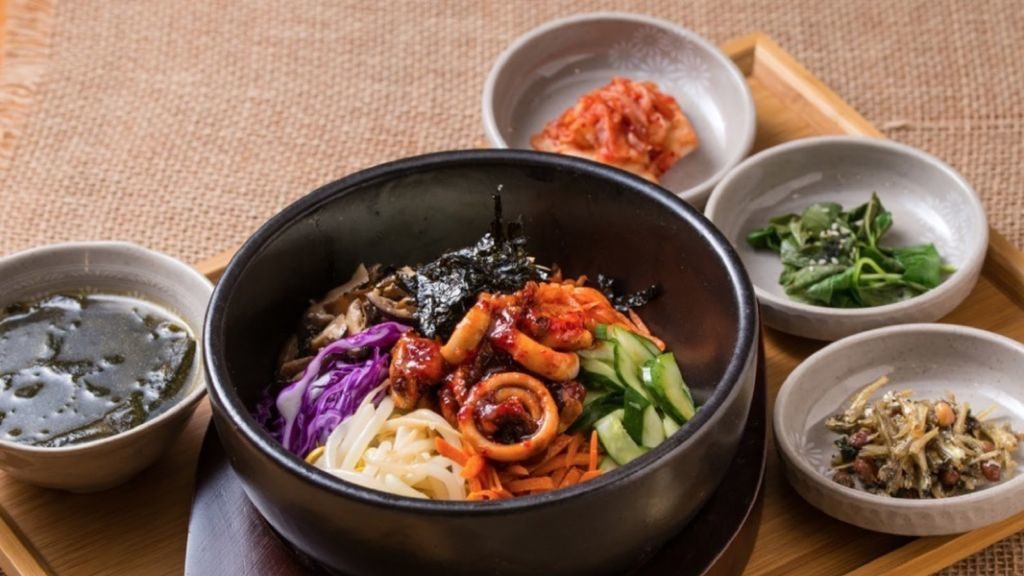Today, the featured meal is one of the healthiest recipes in the world! With a perfect combination of carbohydrates, proteins and fibre, you will jump for joy for such a dish!
Mixed Rice
Bibimbap (비빔밥) is a South Korean rice dish which translates to “mixed rice”. “Bibim” gives the meaning of mixing a variety of ingredients whereas “bap” is referred to rice. Mixed rice varies between countries.
In the Malay community, it is known as Nasi Campur; in Chinese, it is Za Cai Fan (杂菜饭); among Indians, the Banana Leaf Rice is somewhat similar.
What makes Bibimbap any different than the dishes mentioned above? Like any rice dish, bibimbap is served with a bowl of warm white rice.
It is then topped up with namul (sautéed and seasoned vegetables), kimchi, sliced or diced meat, a raw or fried egg and gochujang (chilli red pepper paste) or doenjang (fermented soybean paste). Bibimbap is unique as the entire bowl of goodness is stirred and mixed thoroughly before eating.
Bibimbap exists in different variations in different parts of South Korea. Some of the famous ones are:
- Jeonju-bibimbap: the rice cooked in beef broth instead of water. This version of bibimbap is renowned throughout the nation as it is said to be based on a royal court dish of the Joseon dynasty.
- Jinju-bibimbap: served with raw or cooked beef.
- Tongyeong-bibimbap: served with seafood.
- Dolsot-bibimbap (돌솥 비빔밥): bibimbap served in a hot stone pot.
A culture passed on to generations
There is no exact history of the origins of bibimbap. Perhaps in the olden days, when people habitually conduct prayer rituals to gods, there were fewer kitchen utensils as compared to when they are at home, and they needed to “eat with the gods”, thus, mixing up the dish became a culture.
Some scholars attributed that bibimbap started as a traditional practice of mixing all the food offerings to god in a bowl before partaking of it. Another theory was that bibimbap is made out of the leftover dishes on lunar new year eve to usher in a brand “new” year ahead.
What is in a Bibimbap?
As mentioned before, bibimbap is a mixture of rice, vegetables and proteins. Some of the commonly used vegetables are cucumber, courgette (summer squash), radish, mushrooms, spinach, soybean sprouts and bracken fern stems.
Tofu and a piece of lettuce are a common sight. Proteins in bibimbap include shredded chicken, beef slices, pork and seafood (as with the Tongyeong version).
Bibimbap is always presentable and Instagram-worthy! This is why plating and colouring by choosing the right ingredients plays a vital part in whipping up this unique dish. Vegetables are placed adjacent to each other with colours that complement each other.
One would feel all these are just a hassle for the visual appearance, but the different variants of coloured vegetables provide nutrition to the dish.
Seafood Bibimbap
If you are a seafood lover, this version of the bibimbap is just for you! Instead of the standard proteins that are often present in the unique dish, seafood such as mussels, prawns, clams, sea mustard, seaweed and kelp are used to substitute the proteins.
Such a dish is traditional and exotic! While it may look like a sumptuous dish to have loads of seafood in it, moderate amounts should be added or else the bibimbap would be too heavy and overwhelming. Nevertheless, it is a dish to be tried for its unique seafood flavours without losing the traditional aspects of the bibimbap.
Where to try the seafood bibimbap?
If you are one for a bibimbap meal, try out the traditional and seafood versions at these restaurants Oiso Korean Restaurant and Palsaik! Find more of Korean food on foodpanda!
